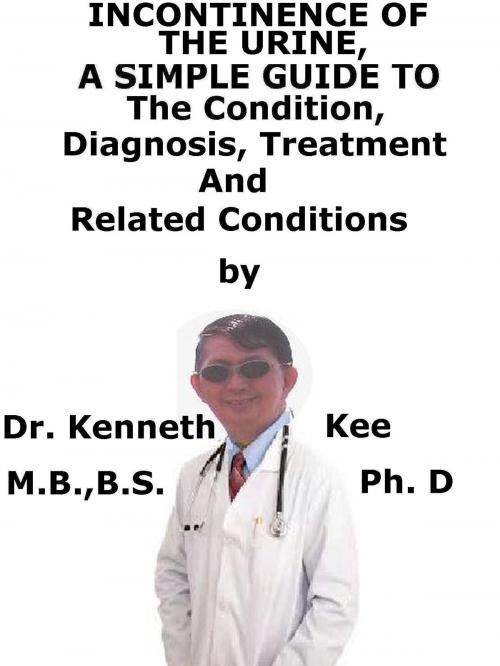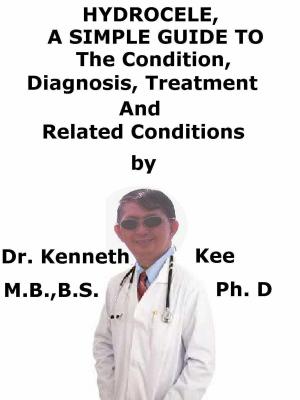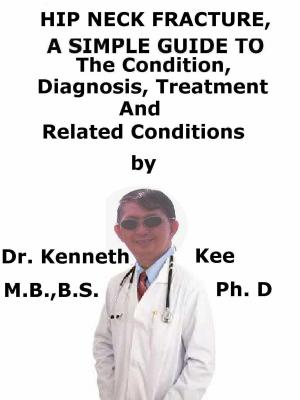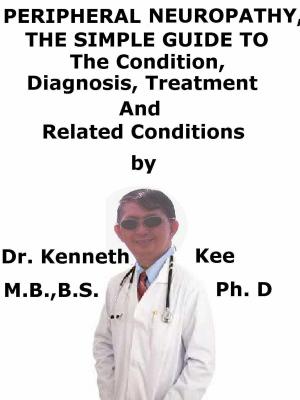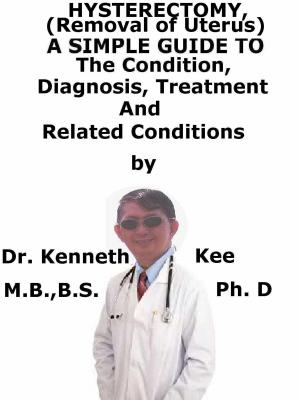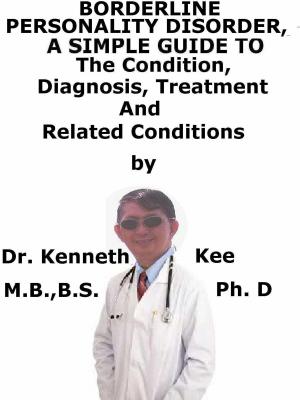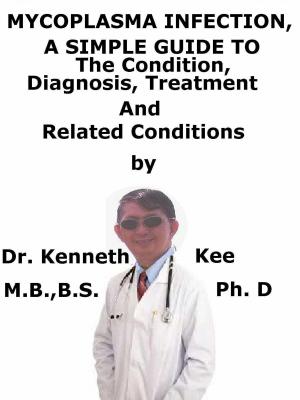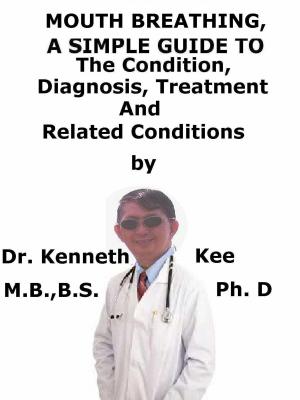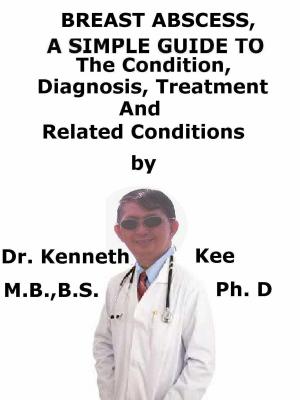Incontinence of The Urine, A Simple Guide To The Condition, Diagnosis, Treatment And Related Conditions
Nonfiction, Health & Well Being, Medical, Specialties, Urology| Author: | Kenneth Kee | ISBN: | 9781370683307 |
| Publisher: | Kenneth Kee | Publication: | September 9, 2017 |
| Imprint: | Smashwords Edition | Language: | English |
| Author: | Kenneth Kee |
| ISBN: | 9781370683307 |
| Publisher: | Kenneth Kee |
| Publication: | September 9, 2017 |
| Imprint: | Smashwords Edition |
| Language: | English |
Urinary incontinence is a symptom and indicates the uncontrollable leakage of urine.
This can produce a lot of discomfort to patients having this disorder or symptom.
Elderly women are more susceptible to it than men.
With a longer life span many elderly patients can be observed being brought to the family doctor clinic wearing adult diapers.
Elderly patients are likely to believe that the only way to prevent embarrassment is to wear absorbent menses pads or padded undergarments like adult diapers.
However the skin wetness may result in rashes, sores, or infections.
Most people with urinary incontinence are women mainly because childbirth weakens the pelvic floor muscles.
Old age in turn such as the menopause produce both weakness and other age related disorders which can affect the period of time the patient can wait once the patient feels the urge to go
Alcoholism and an enlarged prostate can both produce it as well, but childbirth related muscle weakness remains the most frequent cause.
Causes:
With aging, the bladders are not capable of holding as much urine and the sphincter muscles may weaken reducing the body’s ability to stop the urination.
In women the reduction in estrogen after menopause causes the lining of the urethra to be thinner so that it might not close properly permitting urine to leak out.
Childbearing can also raise the danger of forming urinary incontinence.
With age or after vaginal delivery, the pelvic muscles are never as strong as the way they were before birth, particularly after multiple deliveries.
Everyone tend more likely to become incontinent with age because of both the deterioration of the organs and brain
Women have the greater disorder because of childbirth, the menopause and also having a shorter outlet
Other causes:
Diabetes, neurological diseases, and nerve injury
In men and women, urinary incontinence can be due to neurological disorders such as multiple sclerosis, spinal cord injury, and Parkinson’s disease.
Pelvic surgery or prostate surgery
Enlarged prostate in men
Pelvic organ such as uterus prolapse in women
Urinary Incontinence is a medical symptom which may be temporary or permanent
Urinary incontinence may be categorized into 4 main types:
Stress
Urge
Overflow
Functional
Mixed
A full history and physical examination will be able to help the doctor to diagnose urinary incontinence, type and possible causes of the incontinence.
Urinalysis
Post-void Residual Measurement
Ultrasound
Urodynamic Testing
Pad tests
Void diary
Cystoscopy
Treatment:
A. Lifestyle changes.
Scheduled Toileting
Double Voiding
Bladder Training
Reducing Fluid
Kegel exercises
Vaginal cone therapy
Biofeedback
Electrical stimulation
B. Treating the cause of the incontinence
Medicines
antidepressant
anticholinergic
Oxybutynin
Nighttime voiding and incontinence
Desmopressin (DDAVP)
Pessaries
C. Surgery
Removal of Enlarged Prostate
Bladder repositioning
Bladder neck suspension
Periurethral bulking therapy
Mid-urethral slings
Artificial urinary sphincter
Retropubic suspension
The transobturator male sling
Transobturator vaginal tape
Sacral nerve modulation
Injection of neurotoxins such as botulinum toxin
D. Catheterization
Indwelling urethral catheters
Suprapubic catheter
Intermittent Catheterization
Medicated and silver-coated catheters
Other Methods:
Absorbent Pads
Intra-vesical pharmacotherapy
Accupuncture
New Methods:
Potassium channel openers
Prostaglandins
Estrogens
Urethral injection of a combined patient-derived adipose stem cells (ASCs) and collagen
TABLE OF CONTENT
Introduction
Chapter 1 Incontinence of Urine
Chapter 2 Causes
Chapter 3 Symptoms
Chapter 4 Diagnosis
Chapter 5 Treatment
Chapter 6 Prognosis
Chapter 7 Nocturnal Enuresis
Chapter 8 Cystitis
Epilogue
Urinary incontinence is a symptom and indicates the uncontrollable leakage of urine.
This can produce a lot of discomfort to patients having this disorder or symptom.
Elderly women are more susceptible to it than men.
With a longer life span many elderly patients can be observed being brought to the family doctor clinic wearing adult diapers.
Elderly patients are likely to believe that the only way to prevent embarrassment is to wear absorbent menses pads or padded undergarments like adult diapers.
However the skin wetness may result in rashes, sores, or infections.
Most people with urinary incontinence are women mainly because childbirth weakens the pelvic floor muscles.
Old age in turn such as the menopause produce both weakness and other age related disorders which can affect the period of time the patient can wait once the patient feels the urge to go
Alcoholism and an enlarged prostate can both produce it as well, but childbirth related muscle weakness remains the most frequent cause.
Causes:
With aging, the bladders are not capable of holding as much urine and the sphincter muscles may weaken reducing the body’s ability to stop the urination.
In women the reduction in estrogen after menopause causes the lining of the urethra to be thinner so that it might not close properly permitting urine to leak out.
Childbearing can also raise the danger of forming urinary incontinence.
With age or after vaginal delivery, the pelvic muscles are never as strong as the way they were before birth, particularly after multiple deliveries.
Everyone tend more likely to become incontinent with age because of both the deterioration of the organs and brain
Women have the greater disorder because of childbirth, the menopause and also having a shorter outlet
Other causes:
Diabetes, neurological diseases, and nerve injury
In men and women, urinary incontinence can be due to neurological disorders such as multiple sclerosis, spinal cord injury, and Parkinson’s disease.
Pelvic surgery or prostate surgery
Enlarged prostate in men
Pelvic organ such as uterus prolapse in women
Urinary Incontinence is a medical symptom which may be temporary or permanent
Urinary incontinence may be categorized into 4 main types:
Stress
Urge
Overflow
Functional
Mixed
A full history and physical examination will be able to help the doctor to diagnose urinary incontinence, type and possible causes of the incontinence.
Urinalysis
Post-void Residual Measurement
Ultrasound
Urodynamic Testing
Pad tests
Void diary
Cystoscopy
Treatment:
A. Lifestyle changes.
Scheduled Toileting
Double Voiding
Bladder Training
Reducing Fluid
Kegel exercises
Vaginal cone therapy
Biofeedback
Electrical stimulation
B. Treating the cause of the incontinence
Medicines
antidepressant
anticholinergic
Oxybutynin
Nighttime voiding and incontinence
Desmopressin (DDAVP)
Pessaries
C. Surgery
Removal of Enlarged Prostate
Bladder repositioning
Bladder neck suspension
Periurethral bulking therapy
Mid-urethral slings
Artificial urinary sphincter
Retropubic suspension
The transobturator male sling
Transobturator vaginal tape
Sacral nerve modulation
Injection of neurotoxins such as botulinum toxin
D. Catheterization
Indwelling urethral catheters
Suprapubic catheter
Intermittent Catheterization
Medicated and silver-coated catheters
Other Methods:
Absorbent Pads
Intra-vesical pharmacotherapy
Accupuncture
New Methods:
Potassium channel openers
Prostaglandins
Estrogens
Urethral injection of a combined patient-derived adipose stem cells (ASCs) and collagen
TABLE OF CONTENT
Introduction
Chapter 1 Incontinence of Urine
Chapter 2 Causes
Chapter 3 Symptoms
Chapter 4 Diagnosis
Chapter 5 Treatment
Chapter 6 Prognosis
Chapter 7 Nocturnal Enuresis
Chapter 8 Cystitis
Epilogue
